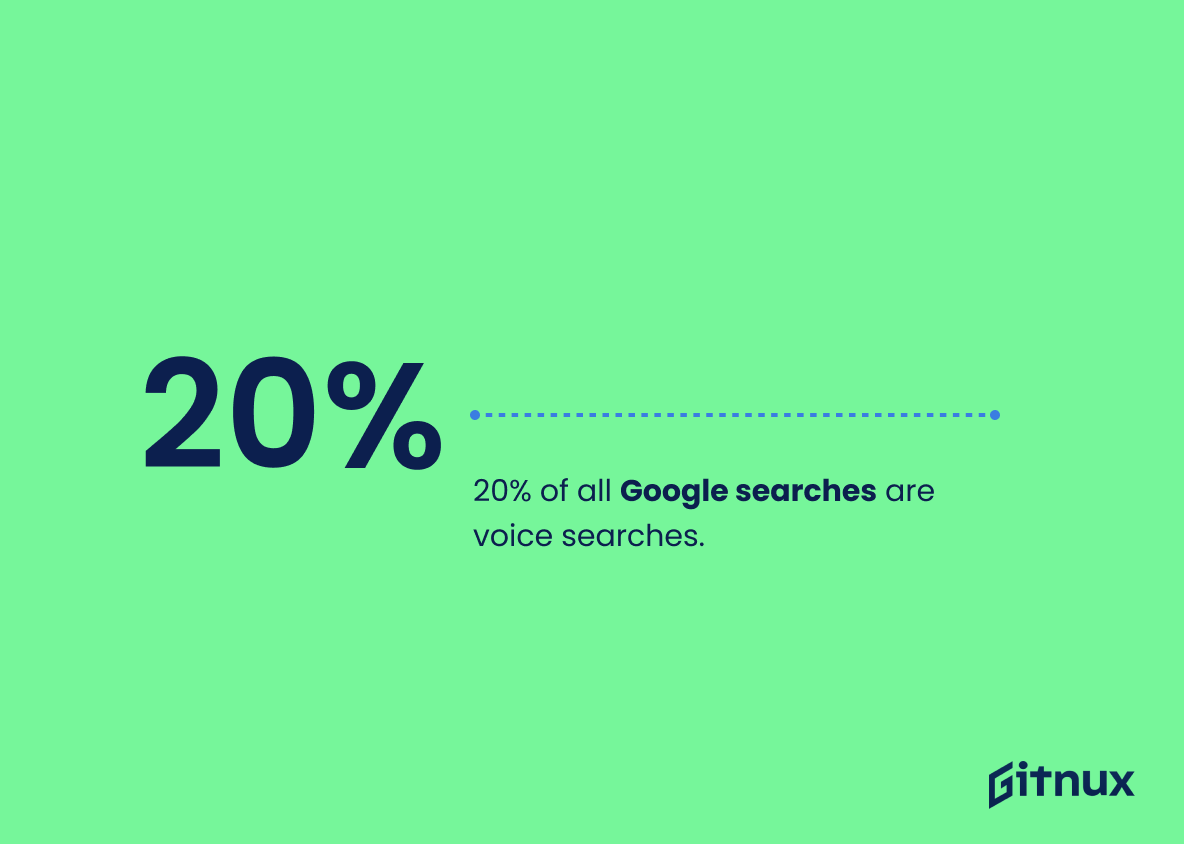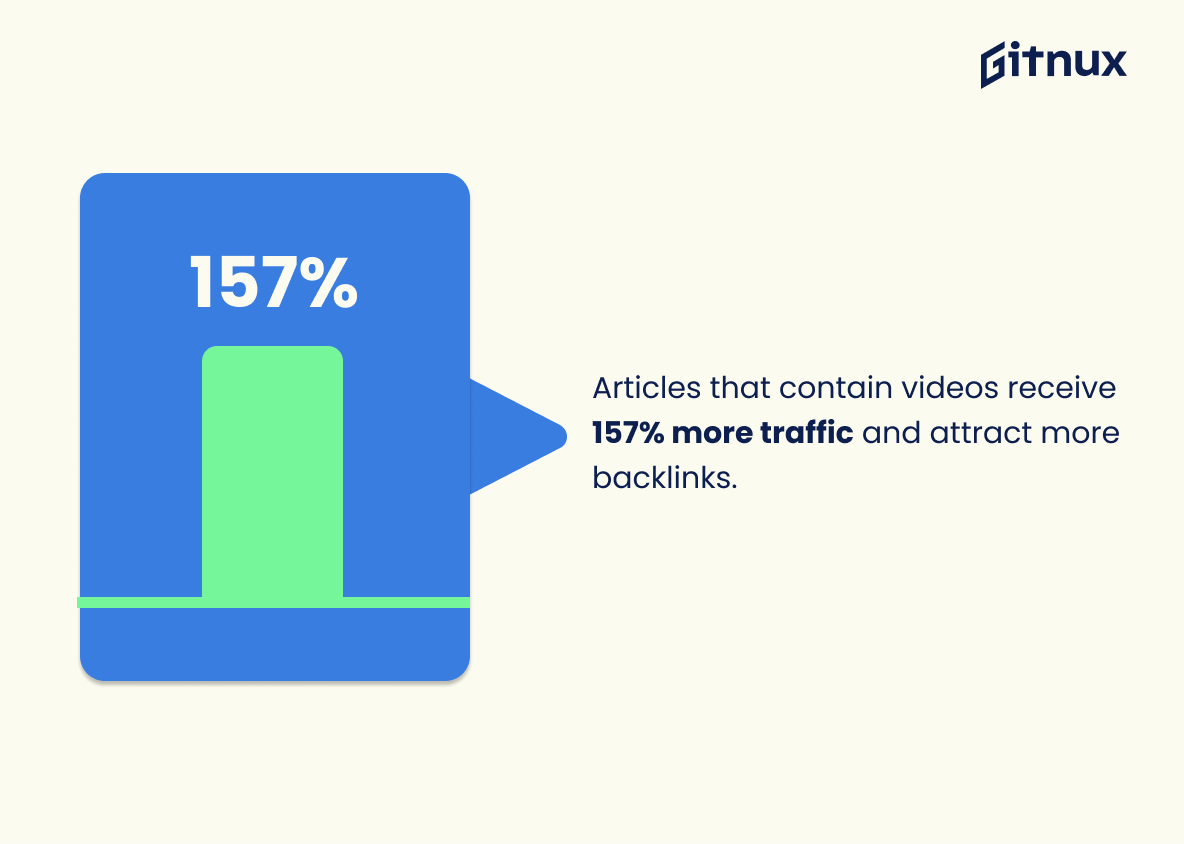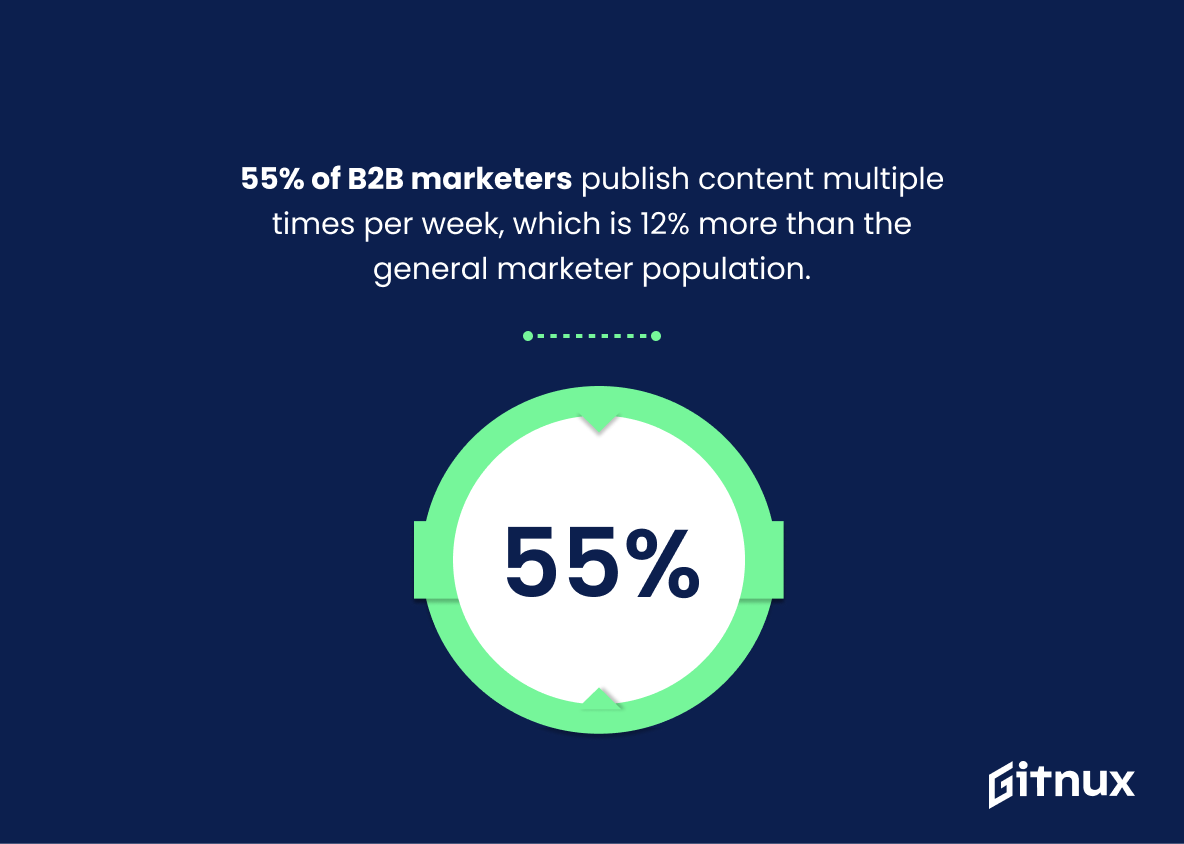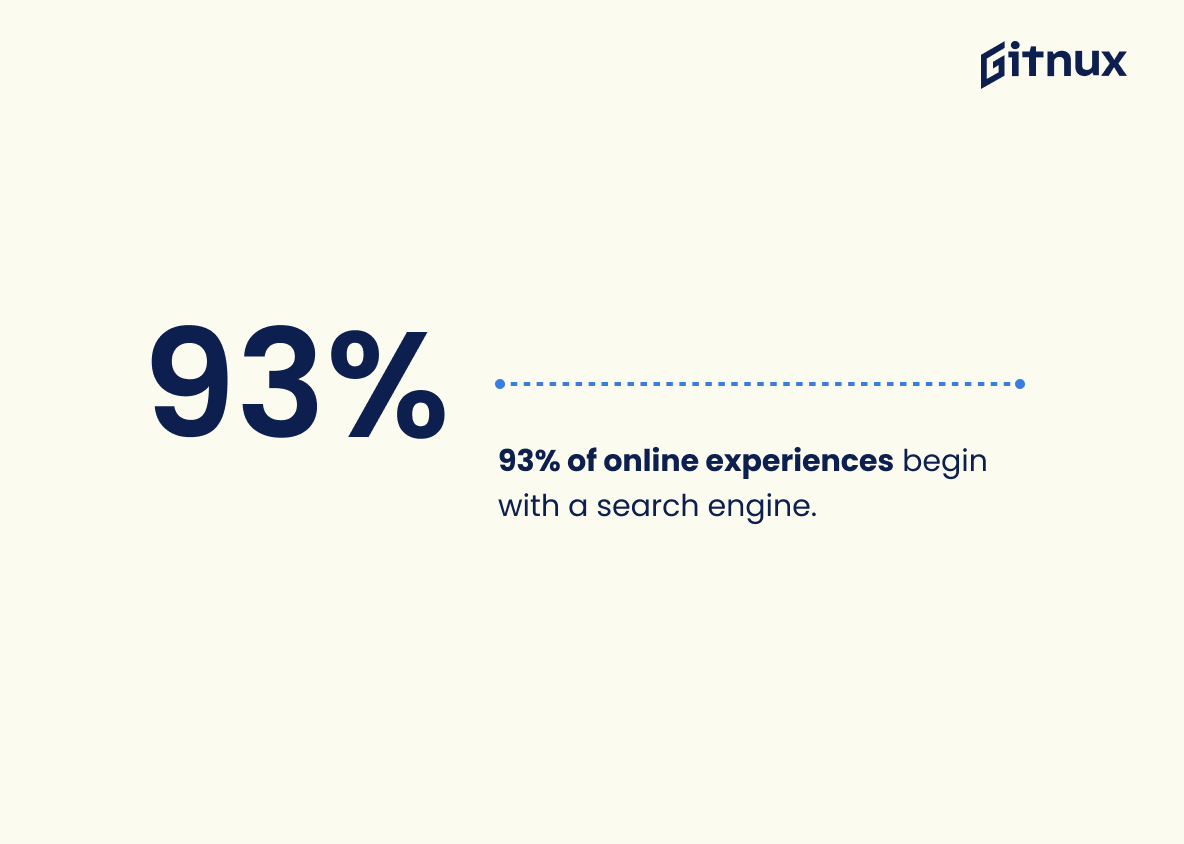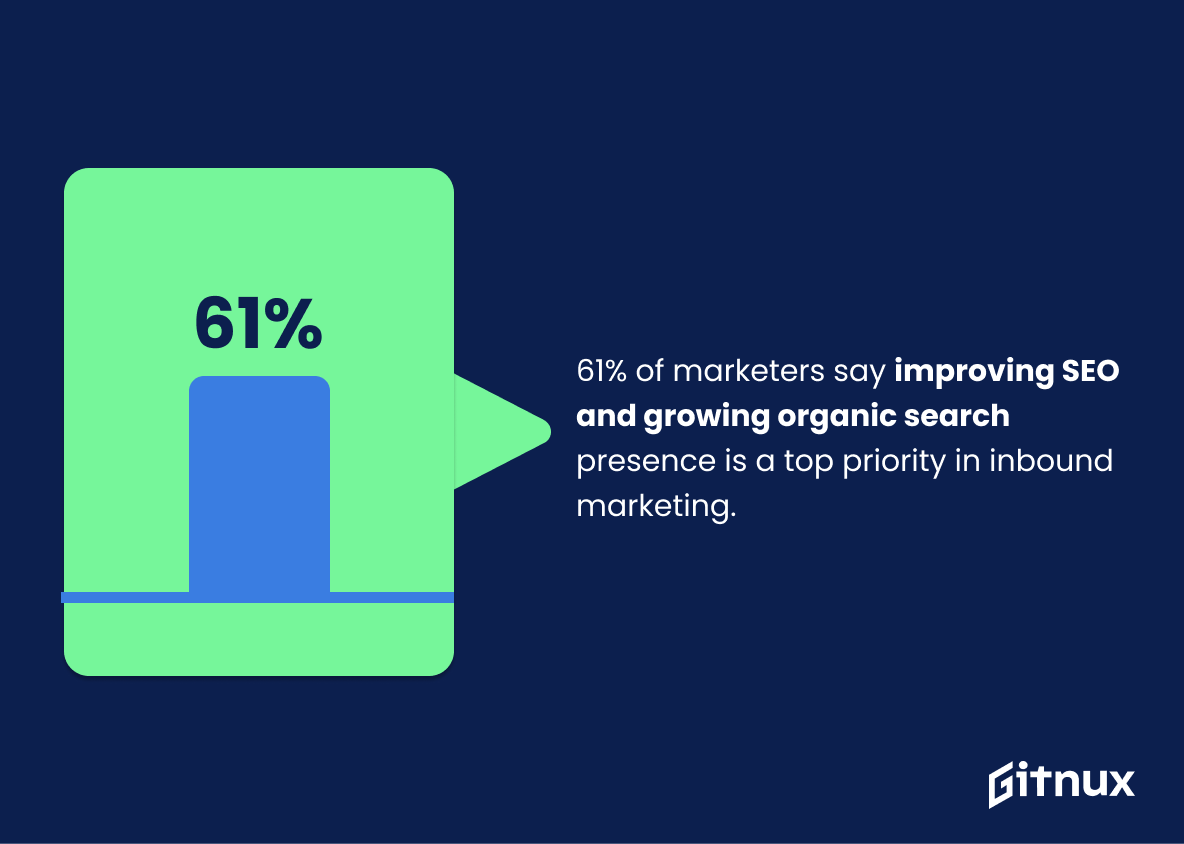Search engine optimization (SEO) is an essential part of any successful digital marketing strategy. It’s the process of optimizing your website to rank higher in search engine results, driving more organic traffic to your website. As the importance of SEO continues to grow, so does the need to understand the latest SEO statistics.
In this blog post, we will take a look at some of the most interesting and important SEO statistics, and how they can help you optimize your website for better search engine rankings. From keyword research to link building to content optimization, we’ll explore the key metrics that can help you create a successful SEO strategy.
SEO: The Most Important Statistics
58.99% of all website traffic worldwide comes from mobile phones.
76% of users end up visiting the searched business within 1 day.
General SEO Statistics
According to inter-growth.co, 68% of online experiences begin with the search engine, while 61% B2B marketers stated that SEO and organic traffic generate more leads than any other marketing tools.
70% of online marketers believe that SEO is better than Pay Per Click (PPC) for generating sales.
A study done by Matt Moran suggests that 61% of marketers consider SEO efforts and boosting organic presence their top inbound marketing priority and 70% of marketers think SEO delivers better results than PPC.
It was also discovered that 86.5% of SEOs use PPC data to inform their SEO campaigns and SEO leads, yielding a close rate of 14.6%.
Google has been the largest search engine for a long time, as its market share is 85.55%.
This year, only 14.45% of the search engine market is shared between other search engines.
53% of U.S. buyers research a product online before making a purchase.
People expect information to be readily available about your product, otherwise you risk a customer.
Mobile SEO Statistics
58% of all searches come from mobile.
A study by Si Quan Ong shows that 58.99% of all website traffic worldwide comes from mobile phones.
It is also believed that 72.6% of internet users will access the web solely via their smartphones by 2025.
There are more searches on mobile than on desktop and 51% of smartphone users have discovered a new company or product when conducting a search on their smartphones.
MorningInsights states that 95% of organic traffic on Google in the US was from mobile and that a high number of visitors from mobile is expected because there are 4.33 billion internet users around the world and 3.7 billion of them are from mobile.
Mobile is more important for eCommerce business, because mobile searches for same-day shipping have grown by 120% since 2015.
Similarly, for physical stores that have an online presence, mobile search for where to shop and buy has increased by 85%.
There’s also a shift in the number of clicks on mobile compared to desktop. The first organic result would get 27.7% of clicks on mobile, while the same first result on the desktop would get 19.3%.
User Search Growth Statistics
20% of all Google searches are voice searches.
It is predicted that that number is only going to keep growing, so now is a great time to start optimizing your website for voice search.
76% of users end up visiting the searched business within 1 day.
According to Google’s consumer insights, most people conducting local searches are extremely likely to show up at your doorstep very soon after looking you up. So, just getting your business a Google Business profile and on Google Maps can direct a sudden (and impressive) flow of traffic to your physical location.
Is Video Content Important to SEO?
Video is the most widely used type of media, which shouldn’t be surprising, since videos are much better at capturing the users’ attention and even explaining complicated questions in a digestible way.
Articles that contain videos receive 157% more traffic and attract more backlinks.
A study by Zupo suggests that video SEO results are 50 times more likely to be organically ranked in Google than text-based results. While a video has an 11,000:1 probability of making it to the first page of Google.
Video search results have a 41% higher click-through rate than text-based results, and they add 2 minutes to the average time a user spends on the site.
Videos that rank on the first page of YouTube have an average length of 14 minutes and 50 seconds and HD videos account for 68.2% of the videos on the first page of YouTube.
After analyzing 1.3 million YouTube Videos, Brian Dean found that comment count, number of views, number of shares, and number of likes are all strongly correlated with higher YouTube rankings.
Adding a video to a landing page can boost conversion rates by up to 80%.
It is also said 84% of consumers have cited video as a convincing factor in a purchase they have made.
B2B SEO Statistics
90% of B2B buyers research products online before purchasing.
B2B and B2C buyer behavior are similar – both prefer to find out as much as they can about a product/service before making a decision.
A B2B buyer conducts 12 searches (on average) before interacting with a website. These 12 searches represent the stages of awareness – it takes a lot more research to convince a B2B buyer to purchase from you than a regular consumer.
46% said one group (or person) is responsible for handling all types of content in their organization (including advertising, thought leadership, brochures, SEO content etc.) – but was slightly higher for small companies (51%) and lower for large companies (30%).
In 2023, 47% of B2B organizations will hire or contract content producers, 25% for content marketers, and 16% for content strategists; which all totals up to 88% being dedicated to content marketing.
55% of B2B marketers publish content multiple times per week, which is 12% more than the general marketer population.
72% of respondents said SEO will be “more impactful” in 2023 than it was in 2022.
What Are the Benefits of SEO?
A study done by impactplus.com shows that SEO can reduce up to 87.41% of the customers acquisition cost when compared to digital advertising.
70% of marketers also believe that SEO is more effective than PPC.
According to a study done by Safari Digital, 92% of traffic goes to the results on the first page of Google. It is also found that 70% of users trust information that they find online.
82% of people who implemented an SEO strategy said that it had a positive effect on their business and SEO is 5.66 times more effective than paid search advertising.
What Are the Costs of SEO?
In a study by Nestor Gillbert, we see that businesses spent about $47.5 billion on SEO in 2020.
The SEO market is also expected to grow at a CAGR of 10% starting in 2021 to 2023, which means that the value of the SEO industry will reach up to $77.6 billion by 2023.
According to search engine journal, $79.27 billion was the estimated amount brands and agencies in the United States would shell out for SEO services in 2020 and $39.58 billion was Google’s projected net U.S. digital ad revenues by the end of 2020 which was equivalent to 29.4% share of the US digital ad market.
This was a 5.3% decline from Google’s 2019 revenues amounting to $41.8 billion.
7.2% was the percentage of decrease in Google’s U.S. net search ad revenues for 2020 and $5,000 was the monthly amount the majority of businesses were spending on SEO.
Supplementary Statistics
93% of online experiences begin with a search engine.
Search engines are the primary gateway to the online world, and that optimizing content for search engines is essential for businesses to reach their target audiences. As such, this statistic is a key piece of evidence for any blog post about SEO statistics, as it demonstrates the need for businesses to invest in SEO strategies in order to maximize their online visibility.
70-80% of users ignore paid advertisements, focusing on organic results.
Despite the prevalence of paid advertisements, the majority of users still prioritize organic results when searching online. This means that, for businesses looking to maximize their visibility online, investing in SEO is essential.
53% of organic search clicks go to the top result.
If a website is not optimized for organic search, it is unlikely to receive the majority of clicks from users. This means that businesses must prioritize SEO in order to maximize their visibility and reach potential customers.
51% of all website traffic comes from organic search.
Organic search is a major source of website visits, and that optimizing content for search engines can have a significant impact on the number of visitors to a website. As such, it is an essential statistic for any blog post about SEO statistics.
91.5% is the average traffic share generated by the sites listed on the first Google search results page.
The majority of web traffic is generated by the sites listed on the first page of Google search results, highlighting the need for businesses to ensure their website is optimised for search engine visibility.
Updating and republishing old blog posts with new content and images can lead to a 106% increase in organic traffic.
By updating and republishing old blog posts with new content and images, it is possible to significantly increase organic traffic, which is essential for any blog post about SEO statistics. This statistic highlights the potential of content optimization and the impact it can have on organic traffic.
71% of B2B researchers start with a generic search.
The majority of researchers are relying on generic search to find the information they need, and that SEO is a key factor in ensuring that businesses are visible to potential customers. As such, this statistic is a key piece of evidence for any blog post about SEO statistics.
68% of online experiences begin with a search engine.
Search engines are the primary gateway to the online world, and that optimizing content for search engines is essential for businesses to reach their target audiences. By understanding this statistic, businesses can better understand the importance of SEO and how it can help them reach their goals.
90.63% of pages get no organic search traffic from Google.
With such a high percentage of pages receiving no organic search traffic from Google, it is clear that businesses and individuals must invest in SEO if they want to be seen online.
Google currently holds 86.86% of the global search engine market share.
This is a key indicator of the importance of SEO when it comes to optimizing content for Google, as it is the most widely used search engine. As such, this statistic is essential for any blog post about SEO statistics, as it provides a clear understanding of the importance of SEO in the current digital landscape.
52.2% of global website traffic comes from mobile devices.
With over half of global website traffic coming from mobile devices, it is essential for businesses to ensure their websites are optimized for mobile users in order to maximize their reach and engagement. This is especially true for SEO, as mobile optimization can have a significant impact on a website’s search engine rankings.
Google processes around 3.5 billion searches daily.
Content is seen by billions of people who use Google every day. It serves as a reminder that SEO is an essential part of any digital marketing strategy, as it can help to ensure that your content is seen by the right people.
61% of marketers say improving SEO and growing organic search presence is a top priority in inbound marketing.
SEO is a priority for marketers, and that they are actively looking for ways to improve their SEO and organic search presence. This is an important point to consider when discussing SEO statistics, as it demonstrates the importance of SEO in the marketing world.
43% of consumers prefer to use web messaging when contacting an online business.
This is an important factor to consider when creating a blog post about SEO statistics, as it highlights the need for businesses to ensure their website is optimized for web messaging. This could include making sure the messaging feature is easy to find and use, as well as ensuring that customer inquiries are responded to in a timely manner.
In 2021, global SEO spending is expected to reach nearly $80 billion.
SEO is no longer a passing trend, but a necessary investment for companies looking to stay competitive in the digital age. This statistic is a clear indication that SEO is here to stay and that businesses are willing to invest heavily in it.
Conclusion
Search engine optimization is an ever-evolving field, and it’s important to stay up-to-date with the latest trends and statistics. SEO is essential for businesses of all sizes and industries, as it helps them reach their target audience and increase their visibility online. The data presented in this blog post shows that SEO is still an important marketing tool and should be taken into consideration when creating an online marketing strategy. Companies that invest in SEO are more likely to experience higher website traffic and improved search engine optimization.
References:
Inter Growth: “27 Mind-Bottling SEO Statistics”, cited in February 2023 (Source)
Startup Bonsai: “37+ SEO Statistics And Trends For 2023”, cited in February 2023 (Source)
Zupo: “47 Video and YouTube SEO Statistics for 2022”, cited in February 2023 (Source)
Back Link: “73 Awesome Video Marketing Statistics”, cited in February 2023 (Source)
Impact Plus: “37 Eye-opening SEO Statistics to Nail Your 2022 Search Strategy”, cited in February 2023 (Source)
Safari Digital: “63 SEO Statistics for 2023 That Matter for Your Business”, cited in February 2023 (Source)
Ahrefs: “78 SEO Statistics for 2023”, cited in February 2023 (Source)
Monster Insights: “55+ Powerful SEO Statistics for 2023 to Boost Your Rankings”, cited in February 2023 (Source)
Finances Online: “94 SEO Statistics You Can’t Ignore: 2022 Market Share Analysis and Data”, cited in February 2023 (Source)
Search Engine Journal: “71 Mind Blowing Search Optimization Stats”, cited in February 2023 (Source)
Respona: “57 Important SEO Statistics For 2023”, cited in February 2023 (Source)
ZipDo, cited June 2023: Seo Statistics


